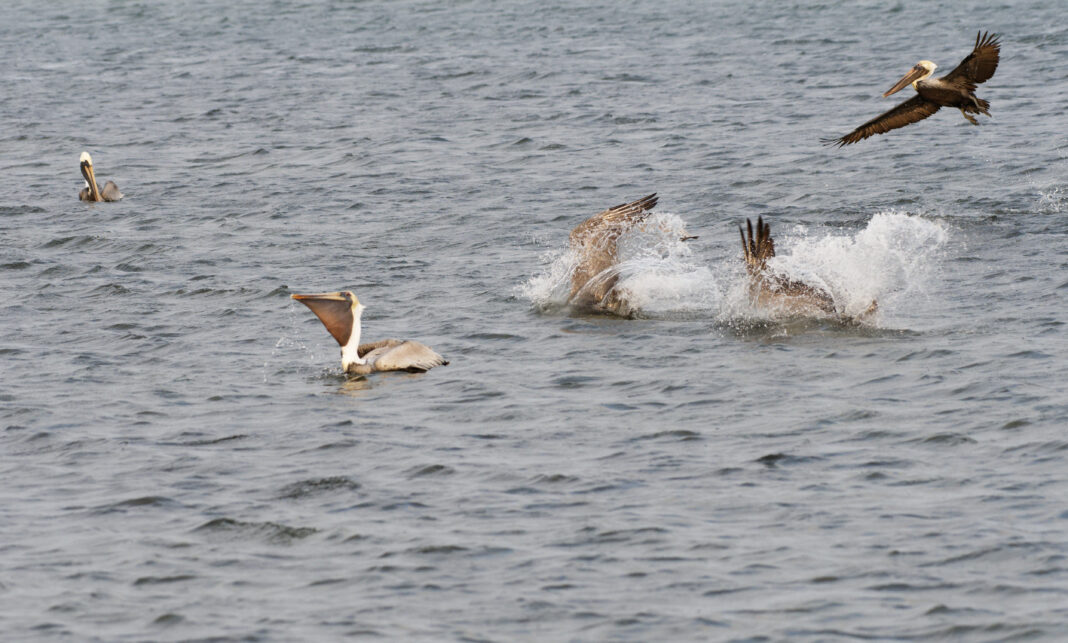High winds accompanying Saturday’s cold front that raced into the Valley had the Pelican Team of rescue volunteers deployed and on high alert.
But team member and wildlife biologist Justin LeClaire said Sunday just a single brown pelican was killed by traffic along State Highway 48 at the Carl “Joe” Gayman Bridge.
“Surprisingly, it turned out just fine,” LeClaire said. “It was probably the wind direction that kind of saved us because it was just slightly northeast, which means it’s not nearly as perpendicular to the roadway. Northwest is the real bad direction.”
“But it was 30 sustained, with gusts over 40,” he added. “If it was northwest it could have been a really bad night. But we only had one bird go down.”
The Pelican Team deploys when cold fronts come to the Valley, which prompts brown pelicans to come up the Brownsville Ship Channel, follow the cut across the highway at Gayman Bridge and roost for the night in the Bahia Grande.
But the bridge has become a pelican graveyard due to curious aerodynamics above the structure which force the pelicans down onto the roadway, where they stand little chance against traffic between Port Isabel and Brownsville in the 75-mph zone.
“The birds for whatever reason were really late showing up,” LeClaire said. “We had maybe two dozen until 5 p.m. Steph (fellow team member, biologist Stephanie Bilodeau) and I were there from one o’clock on, but between 5 and 6 p.m., the last hour of the day, we had close to a thousand cross.”
“If the winds were more northwest, and they were a little earlier, it could have been really bad,” he added.
And it has been bad in the past, with the Pelican Team recording nearly 1,000 pelicans killed at the location over the past five years. The pelican that didn’t make it Saturday evening put the toll at 989.
LeClaire said as usual the Port Isabel Fire Department was on the scene, lights flashing, to encourage motorists to slow down as they cross the bridge.
“There’s a new sign out there which is awesome that TxDOT just installed,” LeClaire said. “They’re new caution poles with a flashing yellow light that says ‘Pelicans Flying Low’ or something like that with a 55 mph cautionary speed limit with flashing lights when the winds get high. … the speed limit was lower, and it seemed traffic was abiding by that.”
TxDOT has altered the bridge so the outside concrete walls now have openings, which mitigates some of the downdraft vortex that sucks the birds down onto the roadway.
“We did notice that last year was the first one with the new barriers on the north side, and it seemed like it definitely helped on the westbound lane because we didn’t have any birds go down on the westbound,” Le Claire said. “But the eastbound was pretty much the same. Last year was our second-highest total for pelicans going down so definitely the problem’s not solved, but that was great to see.”





